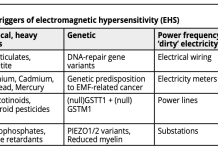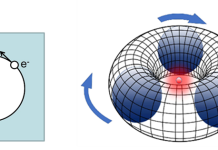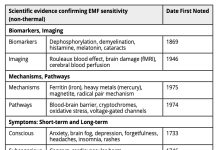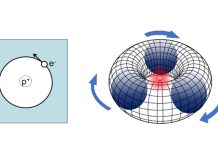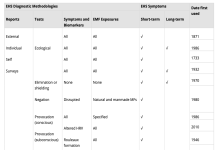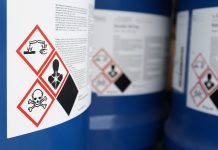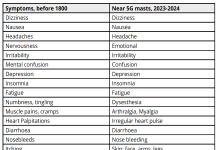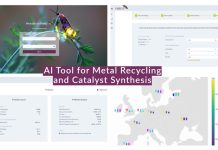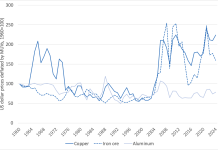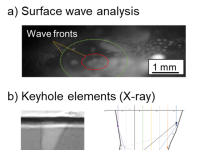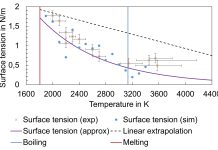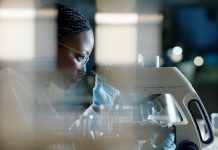Open Access Government produces compelling and informative news, publications, eBooks, and academic research articles for the public and private sector looking at health, diseases & conditions, workplace, research & innovation, digital transformation, government policy, environment, agriculture, energy, transport and more.
Home 2025
Archives
Preventing Electromagnetic Hypersensitivity (EHS)
Michael Bevington discusses strategies for recognising and reducing the impact of manufactured electromagnetic fields (EMFs) and radiation, focusing on EHS triggers, risk reduction, and long-term non-thermal guidelines.
Cadmium (Cd) toxicity and its remediation through plant growth promoting bacteria
This review explores how Cadmium (Cd), a toxic heavy metal that continues to pollute our environment, impacts plants and humans, and examines how plant growth-promoting bacteria (PGPB) can be used for eco-friendly remediation through multi-omics approaches.
Positron and electron catalysis of neutrino hadronization: How our universe was made: Part III
Constantinos G. Vayenas1, Dionysios Tsousis1,2 and Eftychia Martino1 examine positron and electron catalysis of neutrino hadronization, as they continue to explore how our Universe was made.
Confirming Electromagnetic Hypersensitivity (EHS)
Michael Bevington of Electrosensitivity UK advocates for recognising the health and environmental impacts of human-made electromagnetic fields (EMFs), citing both historical and legal acknowledgement as well as scientific research linking EMFs to various symptoms.
Positron and electron catalysis of neutrino hadronization: How our universe was made. Part II
Constantinos G. Vayenas, Dionysios Tsousis and Eftychia Martino discuss advancements in understanding particle physics through the development of the Rotating Lepton Model (RLM).
Raman spectroscopy for forensics: Identifying body fluid traces and gunshot residue
Here, the Department of Chemistry and the Center for Biophotonic Technology and Artificial Intelligence (CeBAI), investigates Raman spectroscopy for forensic applications, a universal technique for identifying traces of body fluids and gunshot residue.
Diagnosing electromagnetic hypersensitivity (EHS)
Michael Bevington, the Chair of Trustees at Electrosensitivity UK, outlines the various symptoms and diagnostic methodologies related to Electromagnetic Hypersensitivity (EHS), a condition first diagnosed in 1871.
Manufactured chemicals: A significant contributor to chronic childhood diseases
Pamela J. Lein from the University of California, Davis, discusses manufactured chemicals as a significant contributor to chronic childhood diseases.
Rethinking silicone coatings: Using polymer architecture to eliminate VOCs
Ring polysiloxanes offer a promising route to VOC-free silicone coatings without compromising performance; Anne Ladegaard Skov and Cody Brian Gale from the Technical University of Denmark explain.
Defining Electromagnetic Hypersensitivity (EHS)
Michael Bevington, Chair of Trustees at Electrosensitivity UK, examines the history of Electromagnetic Hypersensitivity (EHS) over the past 275 years, highlighting key 18th-century discoveries and early reports of health issues related to electromagnetic fields (EMFs).
Electrified (electro)catalyst production and recycling for sustainable catalyst-based chemical industries
Savitha Thayumanasundaram, Research and Development Scientist at the Flemish Institute for Technological Research (VITO) & Project Coordinator of the FIREFLY consortium, explains electrified (electro)catalyst production and recycling for sustainable catalyst-based chemical industries.
The challenge of determining the health risks of low-dose chemical exposures
Rebecca J. Wilson and Pamela J. Lein, explore whether the dose makes the poison or not. Here, they discuss the challenges of determining health risks associated with low-dose chemical exposures.
Metal price cycles, including copper, aluminum, and cobalt
Read this analysis of metal price cycles, including copper, aluminum, lithium and cobalt, featuring insights from Christopher Gilbert of Biena Consulting Srl. It also addresses the significant increase in metals demand from China between 2003 and around 2012.
Does surface tension above boiling temperature still exist?
It remains unclear whether boiling metal surfaces can still show surface tension, says Prof Dr-Ing. Jörg Volpp, Associate Professor at University West, Trollhättan in Sweden.
Role of extracellular electron transfer in the nitrogen cycle
Extracellular electron transfer impacts the nitrogen cycle by enhancing microbial processes and connecting to other biogeochemical cycles. Understanding EET mechanisms provides insights into ecosystem functioning and potential advancements; Arpita Bose and Zhecheng (Robert) Zhang explain.
The journey of high-temperature superconductors: From discovery to today
John H. Miller, Jr., Professor of Physics at the University of Houston, discusses progress in high-temperature superconductors and its applications.
Understanding electromagnetic hypersensitivity (EHS)
Electromagnetic hypersensitivity: Michael Bevington, Chair of Trustees at Electrosensitivity UK, explains the health risks associated with exposure to radiofrequency radiation and electromagnetic fields and why more robust action is needed to protect public health.
Understanding high-temperature material properties
Prof Dr-Ing. Jörg Volpp, Associate Professor from University West, Trollhättan, Sweden, states that understanding metal surface tension at high temperatures will increase process understanding to benefit European Union metal processing and manufacturing industries.
The vital role of sustainable chemistry
Prof. Dr. Cecilia Van Cauwenberghe, PhD, MSc, BS, MBA, Research Director at Everest Group, sheds light on sustainable chemistry, including how breakthrough innovations drive global change.
Floreon technology, redefining polylactic acid
Dr Andrew Gill, CTO, and Dr Sandrine Garnier, CEO of Floreon Technology Ltd., explain how the company is redefining Polylactic Acid, starting with who they are and what they offer.

